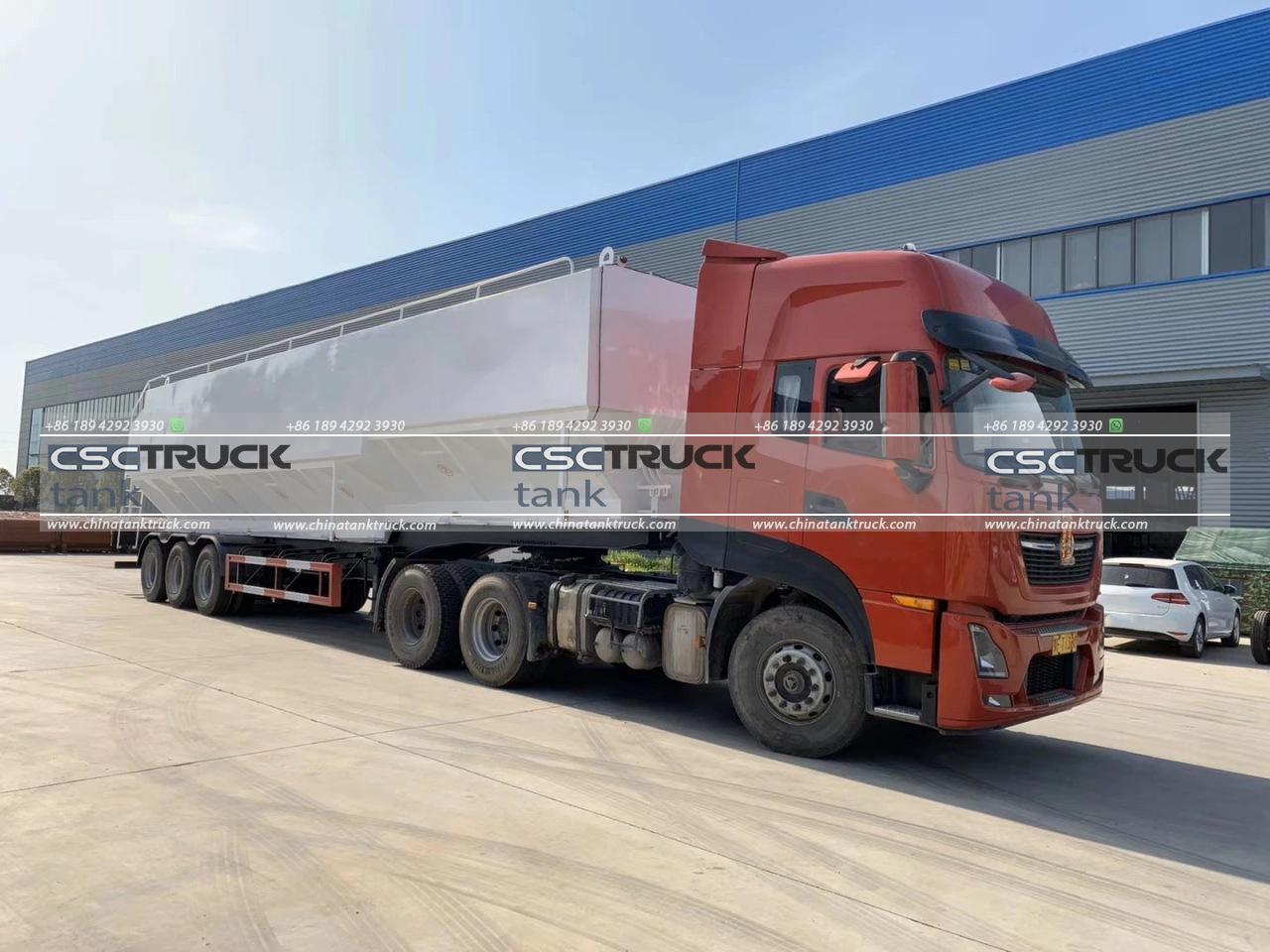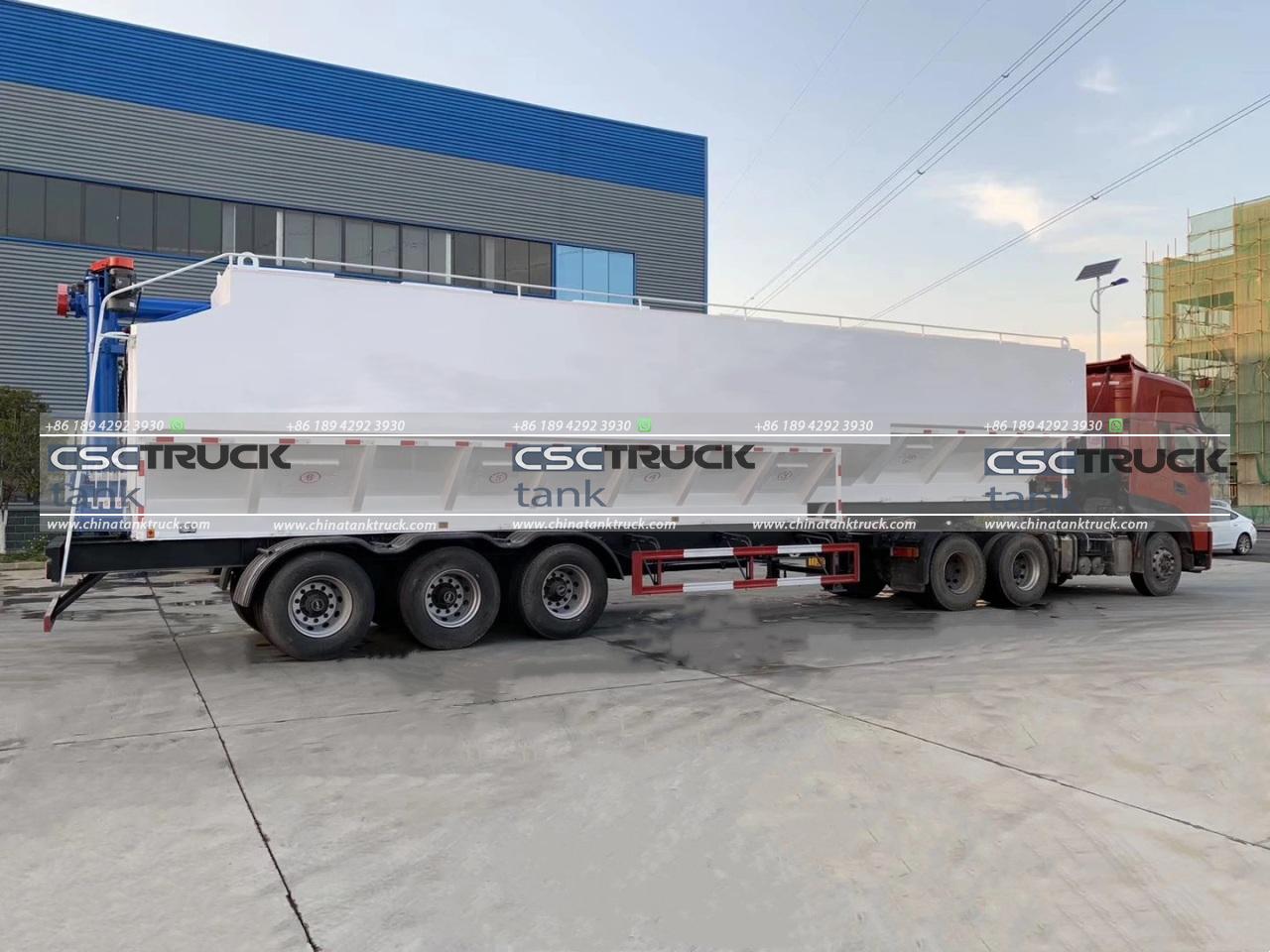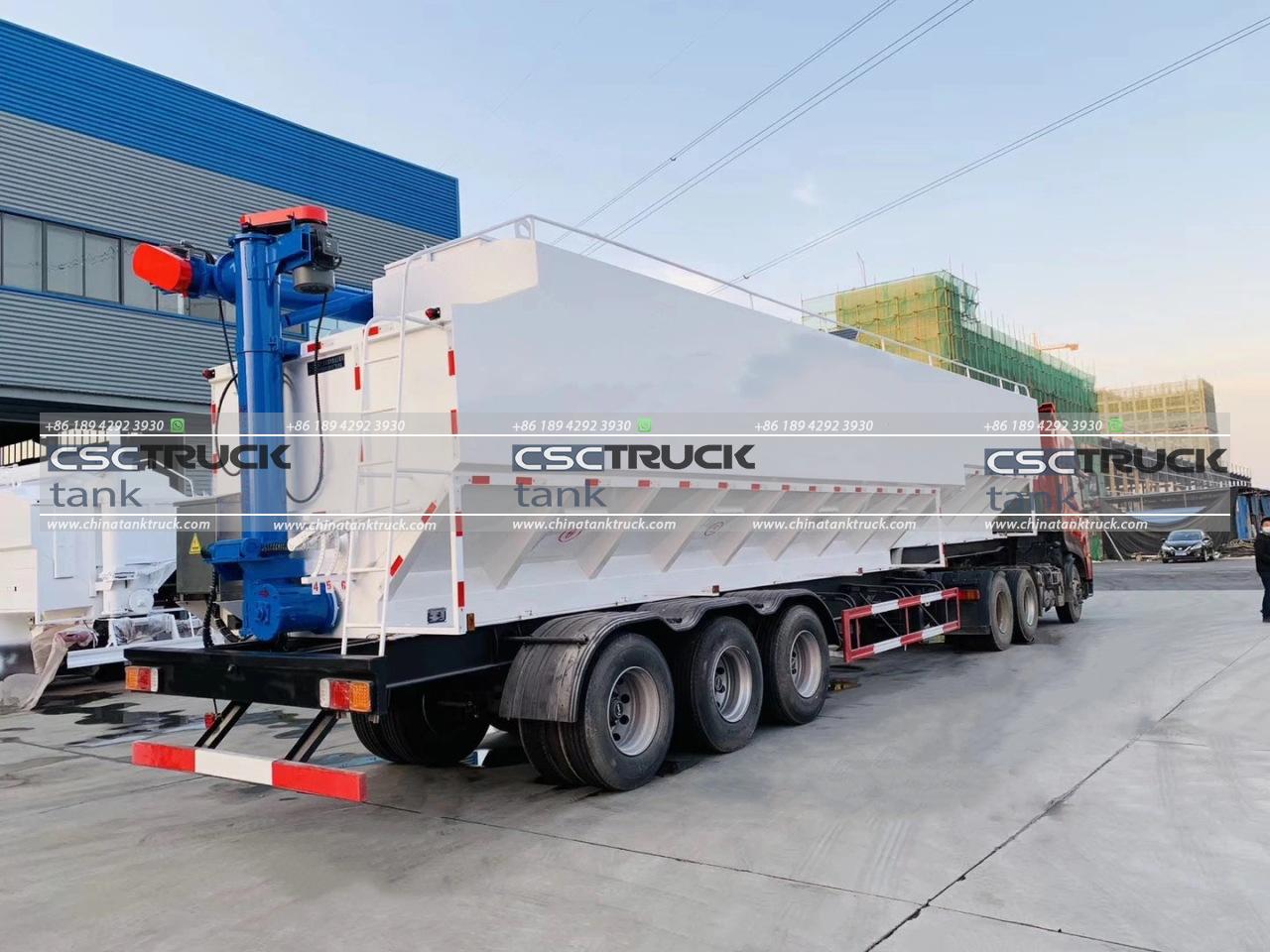How Many Tons Can a Pneumatic Trailer Hold?
Pneumatic trailers, often referred to as bulk trailers or dry bulk trailers, are specialized vehicles designed to transport dry materials such as cement, sand, flour, or other powdered or granular substances. These trailers are widely used in industries like construction, agriculture, and food processing, as they offer an efficient way to move large quantities of materials. One of the key questions for operators and businesses is understanding the carrying capacity of these trailers, specifically in terms of how many tons they can hold. This article delves into the factors that determine the weight capacity of pneumatic trailers, typical load ranges, and the variables that influence how much they can transport.
Understanding Pneumatic Trailers
A pneumatic trailer is distinct from other bulk trailers because of its ability to load and unload materials through a pneumatic (air) system. This system is crucial for maintaining product integrity, minimizing contamination, and ensuring efficient delivery of materials. The trailer typically consists of a cylindrical tank with conical hoppers at the bottom, each equipped with valves for controlled release. When unloading, the air is pumped into the trailer, fluidizing the material inside and allowing it to flow through the valves into the receiving container or storage unit.

Key Factors Affecting Capacity
The weight a pneumatic trailer can hold depends on several factors:
1. Trailer Size and Design
Pneumatic trailers come in various sizes, generally categorized by their tank capacity, which is typically measured in cubic feet. Most pneumatic trailers range from 1,000 cubic feet to over 3,000 cubic feet in volume. Larger trailers, with higher cubic foot capacities, can carry more material.
However, tank size isn’t the only factor that determines weight capacity. The density of the material being transported plays a critical role. For instance, transporting a lightweight material like flour will not utilize the entire weight capacity, even if the trailer is filled to its volume limit. Conversely, heavier materials like cement or sand may reach the weight capacity before the tank is filled.
2. Material Density
The density of the product being transported is essential for determining how much weight a pneumatic trailer can hold. Density is generally measured in pounds per cubic foot (lb/ft³). For example:
– Cement has a density of approximately 94 lb/ft³.
– Flour has a density of about 40 lb/ft³.
– Sand has a density ranging between 90-100 lb/ft³, depending on moisture content.
If you’re transporting a dense material like cement, the trailer will reach its weight limit well before it’s physically full. Conversely, for lighter materials like flour, the trailer may reach its volume limit before hitting the weight capacity.
3. Axle Configuration
Axle configuration plays a significant role in determining how much weight a pneumatic trailer can legally transport. Most pneumatic trailers are equipped with 2 or 3 axles, but some configurations can have four or more. The number of axles impacts the trailer’s ability to distribute weight and comply with road regulations.
Tandem axle trailers (2 axles) typically have a lower weight capacity compared to tri-axle trailers (3 axles). The more axles a trailer has, the more weight it can legally carry. This is particularly important in regions where weight restrictions are tightly regulated to protect road infrastructure.
4. Legal Weight Limits
While pneumatic trailers may have the physical capacity to carry substantial loads, they are also bound by legal weight limits that vary by region and country. In the United States, for example, the Federal Highway Administration (FHWA) imposes a gross vehicle weight (GVW) limit of 80,000 pounds for most vehicles on interstate highways. This includes the combined weight of the truck, trailer, and cargo.
Assuming the truck itself weighs around 30,000 to 35,000 pounds, the maximum payload for a pneumatic trailer is typically between 45,000 and 50,000 pounds, or roughly 22 to 25 tons. Exceeding these limits can result in fines and penalties, as well as increased wear and tear on the vehicle.
Typical Weight Capacities by Trailer Size
1. Small Pneumatic Trailers (1,000-1,500 cubic feet)
These trailers are ideal for smaller loads or when transporting lighter materials. A 1,000 cubic foot trailer can typically carry between 18 to 20 tons of material, depending on the product’s density. For example, it might hold around 20 tons of sand but significantly less if carrying flour.
2. Medium Pneumatic Trailers (1,500-2,500 cubic feet)
Medium-sized trailers offer more flexibility and are common in industries like construction and food production. With a capacity of 1,500 to 2,500 cubic feet, these trailers can usually carry between 22 and 25 tons of material. The exact weight again depends on the material’s density.
3. Large Pneumatic Trailers (2,500+ cubic feet)
Large trailers, such as those with over 2,500 cubic feet of capacity, are used for high-volume transportation needs. These trailers may be able to carry between 25 to 30 tons, although they often reach the legal weight limit before being filled to their volumetric capacity when transporting denser materials like cement or sand.

Factors That Can Reduce Capacity
While pneumatic trailers are designed for maximum efficiency, several factors can reduce their effective load capacity:
1. Moisture Content
Materials like sand or cement can absorb moisture, increasing their weight. For example, wet sand is significantly heavier than dry sand, which could cause the trailer to reach its weight capacity before it is full. Moisture can also affect the unloading process, making it harder for the material to flow smoothly.
2. Trailer Material and Design
The weight of the trailer itself also affects how much material it can carry. Newer models made from lightweight materials like aluminum offer more payload capacity compared to older, heavier trailers made of steel. Additionally, trailer design features like aerodynamic components and lighter construction can help optimize weight capacity.
3. State and Local Weight Regulations
State and local regulations may impose stricter weight limits than federal guidelines, particularly in areas where road infrastructure is more vulnerable to damage. Operators need to be familiar with the legal weight limits in the areas where they are operating.
Conclusion
The tonnage capacity of a pneumatic trailer depends on a range of factors including the trailer’s size, the density of the material being transported, the axle configuration, and legal weight limits. Generally, most pneumatic trailers can carry between 22 and 30 tons, though this number fluctuates based on the material and external conditions. Operators must balance these factors to optimize their loads while staying compliant with legal weight restrictions. By understanding the intricacies of their pneumatic trailers, businesses can ensure efficient and cost-effective material transport.


